Farmers and gardeners alike have used crop rotation for centuries for one primary reason: it works. The logic is simple – crop rotation prevents soil depletion and maximizes yields over the long term. The concept dates back to the Roman Empire and Ancient Greece. This is when farmers realized that planting the same crop in the same plot season after season leads to dwindling yields.
With the “food, feed, fallow” system, ancient Roman farmers divided their land into three sections where food crops, livestock feed, and fallow plots alternated each growing season. But why should modern-day gardeners and farmers rotate their crops? Keep reading as we dive into why crop rotation is a game-changer for any garden or farm.
This article will help you understand the principles of crop rotation and how incorporating it into your garden or farm can help you reap the rewards of a more sustainable, productive, and profitable yield.
What is Crop Rotation?
The definition is always an excellent place to start, so let’s look at what crop rotation is and how it works. Picture your favorite meal. Now, imagine if every time you cooked that meal, it turned out bland, undercooked, or worse — inedible. This happens when farmers repeatedly plant the same crop in the same soil year after year.
Crop rotation is the right solution to break the monotony. Farmers can ensure a healthy and more productive crop each year by strategically rotating crops to plant in different areas of the same soil.
Like Sudoku or any strategic game, crop rotation requires skill, careful planning, and expert placement. A well-crafted rotation chart reveals the most effective order of crops to plant every season for three to ten years. Not only does this optimally balance the soil’s nitrogen levels, but it also decreases the population of pests, weeds, and harmful pathogens.
Crop rotation is more than just switching crops. You can also incorporate livestock grazing to improve soil organic matter, facilitate water retention, and stimulate nutrient cycling. This process is especially advantageous in areas with less rainfall. Crop rotation aims to maintain optimal nutrient levels in the soil by providing suitable crops to interact with.
For example, tomatoes and peppers draw a lot of nitrogen from the soil, which can lead to soil depletion if planted season after season. Farmers might plant a nitrogen-fixing crop like soybeans in the next season to restore soil nitrogen balance.
Crop rotation can take several years to complete an entire cycle, by which the originally-planted crop in one area of the land will not be grown in that part of the soil for many years.

Farmers might plant a nitrogen-fixing crop like soybeans in the next season to restore soil nitrogen balance.
©nada54/Shutterstock.com
Crop Rotation’s Guiding Principles
Crop rotation may seem simple, but it has some fundamental guiding principles. Here are some fundamentals of crop rotation for farmers:
- Vary your crops based on changing conditions. Farmers must adapt their crop rotation plans depending on individual requirements, environmental conditions, and the available budget. Therefore, rather than follow a specific crop rotation plan, they should aim to alternate crops based on changing circumstances.
- Follow a rotation sequence: Crop rotation involves planting leguminous crops after cereal crops and leaving the land undisturbed for at least one season. This prevents soil fertility loss, erosion, and pest infestations.
- Prevent soil fertility loss: If the same crop is grown continuously, it depletes the same set of nutrients from the soil. Farmers should aim to grow crops that replenish the soil with nutrients, such as pulses, alfalfa, bluegrass, or clover.
- Avoid pest infestations: Many pests specialize in a certain crop. When farmers plant the same crop repeatedly, pests find favorable conditions to dominate. Crop rotation discourages infestations by limiting the favorable conditions for pests’ strain.
- Prevent soil erosion: Repeated planting of the same crop leaves the soil unprotected as each crop has its own uniquely shaped root system and growth patterns. Farmers should alternate crops with different growth habits to prevent soil erosion.
Consider the following crop rotation plan: Adopt a seven-year crop rotation scheme that involves planting corn in the first year, followed by oats in the second year. Alfalfa or clover in the third to fifth year. You can then fallow land or use it as pasture for livestock in the sixth to seventh year. Another farmer choosing a simpler scheme could plant carrots in the first year, wheat in the second year, and bluegrass in the third to seventh year.
Top 9 Reasons to Rotate Crops in Your Garden
Crop rotation can be a valuable tool for farmers and gardeners alike. Here are the top 9 reasons to rotate crops in your garden:
1. Reduces Water and Land Pollution
Rotating crops in your garden is an excellent way to reduce water and land pollution. As the agricultural industry intensifies, the need to artificially boost soil nitrogen content has become inevitable. Unfortunately, this has disrupted the ecosystem’s natural nitrogen cycle. Fertilizer overuse causes contaminants to be released freely into the environment.
Research indicates that roughly 80 percent of agricultural fertilizer nutrients eventually contaminate water sources. The resulting nitrogen pollution causes eutrophication, thus endangering our water supply and causing severe health issues. Nitrate-rich water, for example, limits oxygen transportation to infant bloodstreams and causes a life-threatening ailment called Blue Baby Syndrome.
Nitrogen contamination affects us all. A 2010 study by the U.S. Geological Survey discovered that around 64 per cent of shallow wells in U.S. agricultural areas contain excessive nitrate levels. You can do your part by rotating your garden crops to make a difference. Make efforts to replace nitrogen gradually and systematically and avoid releasing contaminants into our precious resources.
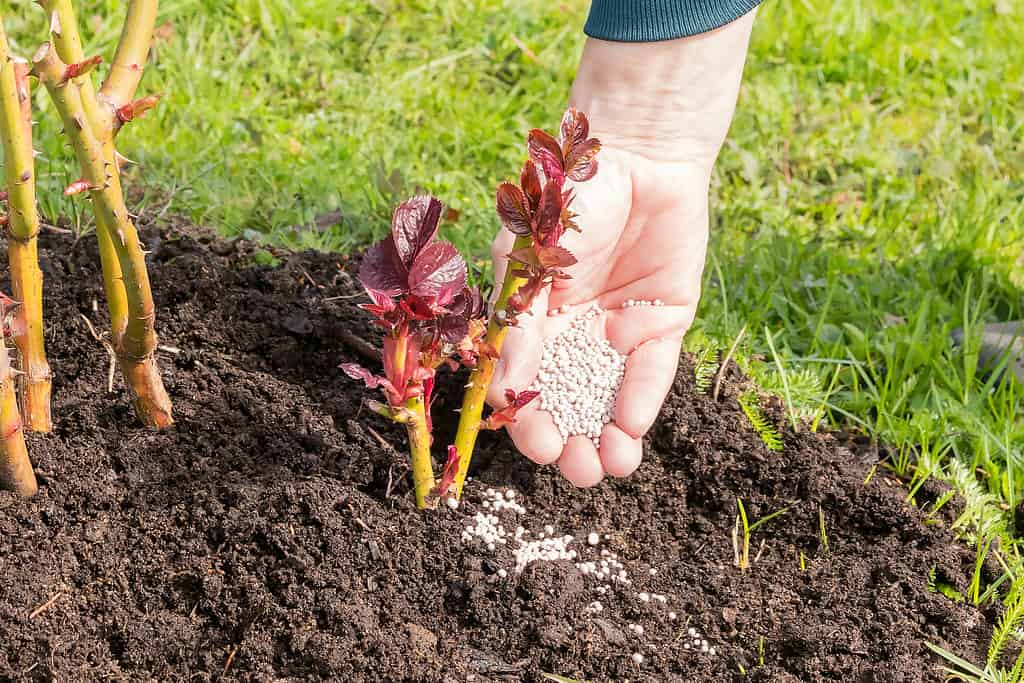
Fertilizer overuse causes contaminants to be released freely into the environment.
©iStock.com/Ludmila Kapustkina
2. Helps Conserve Water
Rotating crops in your garden is an excellent way to reduce water and land pollution while ensuring healthy yields. Crop rotation enhances soil structure, improving water-holding capacity. It allows fast and thorough water absorption, with some water readily taken by crops and the rest retained deeper in pores to be drawn by plants during drier periods. This situation conserves farm water, as irrigation needs are significantly reduced.
Better water holding capacity also reduces soil runoff and nutrient loss, lowering flooding risk as soils act as a sponge. Improved water-holding capacity prevents erosion and replenishes groundwater reservoirs.
Moreover, crop rotation helps ensure the continuous supply of essential plant nutrients, maintaining soil fertility. By changing crops during the growing season, pests that would otherwise thrive in monoculture settings cannot build up and infest the crops. This reduces the use of pesticides.

Crop rotation conserves farm water, as irrigation needs are significantly reduced.
©iStock.com/
3. Enriches Soil with Nitrogen
While plants require nitrogen to fuel their growth, they can’t use atmospheric nitrogen directly. Instead, they team up with nature and use symbiotic bacteria, such as Rhizobium spp., that live on legume roots, to draw nitrogen into the soil. The resulting “fixed” nitrogen enriches the soil, ensuring subsequent crops access this crucial nutrient.
You can maintain healthy soil and increase garden yield by alternating nitrogen-hungry crops with nitrogen-fixing crops. Here’s why:
- While the atmosphere contains 78 percent nitrogen, plants cannot use it. They need fixed nitrogen from the soil.
- Leguminous crops, such as soybeans and lentils, can fix up to 200 kg of nitrogen per hectare in one year. This is done through symbiotic bacteria living on their roots. This ensures that cereal crops or grass species grown on the same land will have the nutrients to grow.
- Not only do leguminous crops enrich the soil with nitrogen, but they also produce protein-rich beans. This means you can have a tasty protein source and healthy soil.
- Alternating between nitrogen-hungry and nitrogen-fixing crops improves soil fertility and crop resilience, leading to higher yields and healthier plants.
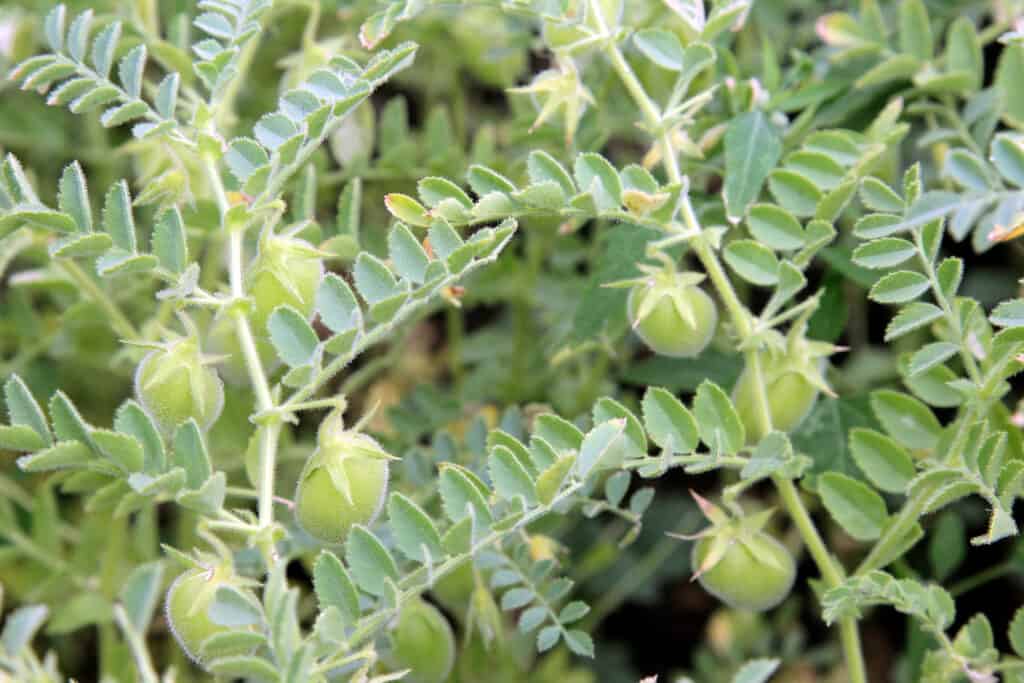
Leguminous crops, such as soybeans and lentils, can fix up to 200 kg of nitrogen per hectare in one year.
©Leo Pakhomov/Shutterstock.com
4. Improves Soil Structure
Soil structure is the key to healthy crop growth. Without it, the roots won’t have enough room to spread, and nutrients won’t reach the plant. But with crop rotation, worry not. Rotating crops can solve these problems.
You can get your soil back in tip-top shape by alternating deep-rooted plants, like oats, with shallow-rooted plants, like red clover. But how does it help? Well, let’s break it down for you:
- Improves soil porosity: Deep roots create pathways for water and air to penetrate the soil, increasing its porosity.
- Stabilizes soil particle aggregates: Shallow roots prevent erosion and surface runoff by holding soil particles together.
- Manages nutrients efficiently: Deep roots tap into lower soil layers for nutrients, while shallow roots pull nutrients from the upper layer, ensuring every inch of soil is used.
- Increases water retention: Healthy soil holds onto water better, saving lives during dry spells.
- Boosts biodiversity: Different root systems attract a wide range of soil organisms, contributing to overall soil health.
- Adds organic matter: When crops decompose, they leave valuable organic matter that improves soil structure and fertility.
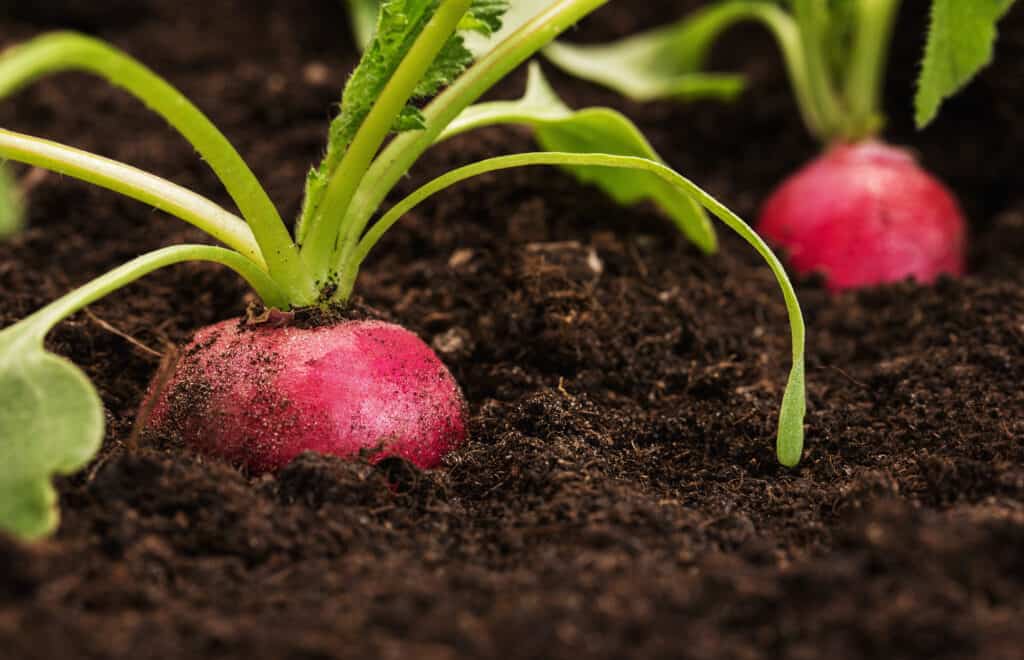
Soil structure is the key to healthy crop growth; without it, the roots won’t have enough room to spread, and nutrients won’t reach the plant.
©iStock.com/Nastco
5. Prevent Soil Erosion
Crop rotation is like hitting “reset” on your garden’s soil health. Not only does this prevent erosion, but it also guards against pests and diseases that accumulate in the soil.
Take Iowa, for example. A 13-year research study found that crop rotation reduces erosion by nearly 90 percent compared to traditional monoculture farming. That’s right; crop rotation can decrease soil loss by almost 90 percent. By rotating your crops, you can retain the precious topsoil required to maintain a healthy garden and produce delicious, nutrient-rich veggies for years.
Here’s how it works:
- Less tilling: Crop rotation involves longer periods of reduced soil disturbance, as land is left fallow and unplanted.
- Cover crops: Cover crops are planted for most of the rotation cycle, which holds soil in place and shields it from rain and wind, which are reasons behind soil erosion.
- Diverse root systems: The combination of crops with different root structures, lengths, and shapes provide a solid hold on soil particles.
- Appropriate spacing: Different crops require different spacing. Crop rotation ensures that some areas are left exposed for shorter periods.
- Healthier soils: Improved soil structure and water-holding capacity prevent damage caused by heavy rainfall or flooding.
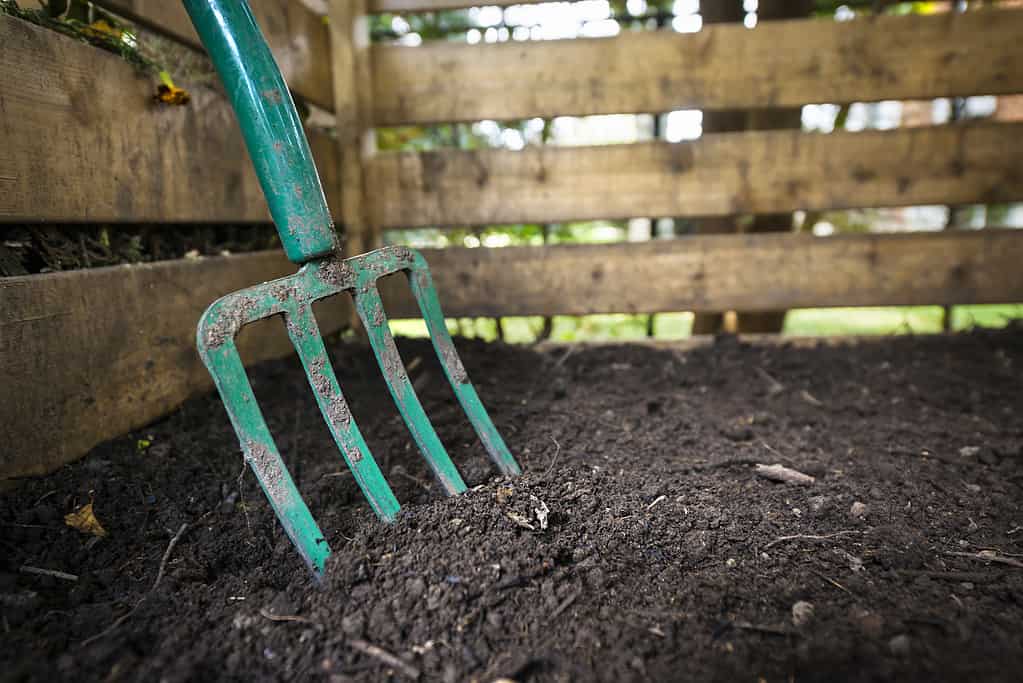
Not only does crop rotation prevent erosion, but it also guards against pests and diseases that accumulate in the soil.
©Elena Elisseeva/Shutterstock.com
6. Increases Crop Yields
Rotating crops also helps control pests and diseases. Crop rotation disrupts pest and disease organism lifecycles, making it harder for them to survive and reproduce. This means fewer pesticides, which is better for the environment and your wallet.
According to a 2018 study published in The Manitoba Co-operator, rotating crops can increase crop yields. The study showed that Manitoba crops sown on large fields with previous crops in rotation 3 had higher yield responses.
7. Controls Weeds
Weeds are a menace to any garden, causing damage to your plants and depleting your yields faster than you can say ‘pest control.’ One effective way to reduce pests and weeds attacking crops is crop rotation. This ancient practice of growing different crops on the same soil patch is simple yet effective.
With modern agricultural practices, chemical herbicides have taken over, leaving crop rotation in the dust. But the widespread use of those chemicals has its issues, from environmental contamination to increased pest resistance.
By switching planting locations and planting different crops, you can prevent harmful bacteria from taking hold and spreading. Certain pests or diseases prefer certain crops as hosts. By rotating, you remove their preferred host and disrupt their lifecycle.
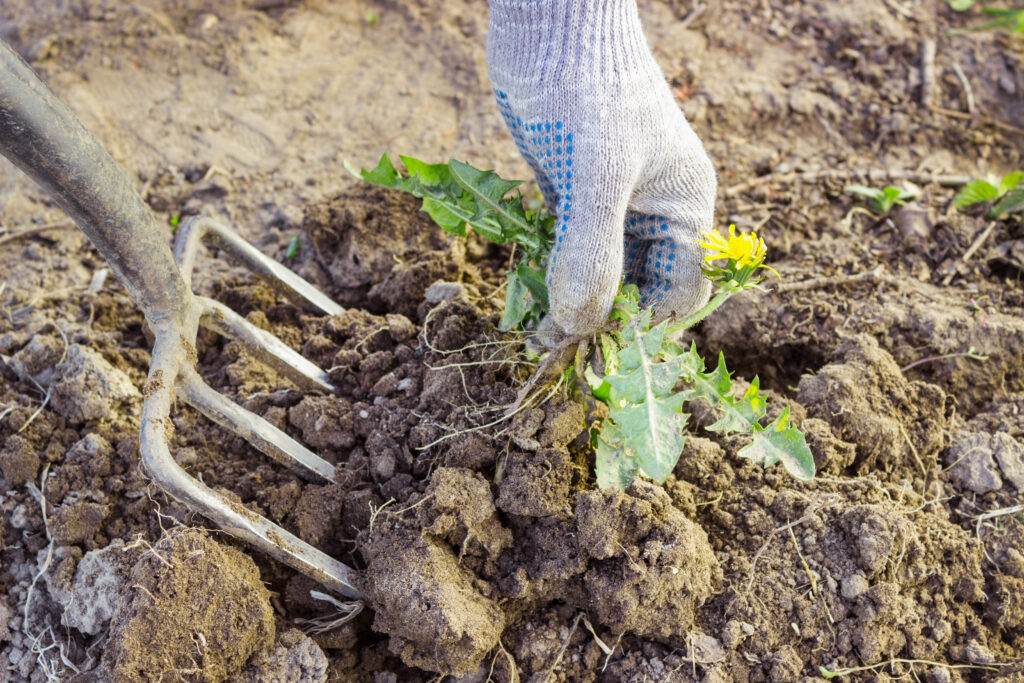
Weeds cause damage to your plants and deplete your yields.
©Sever180/Shutterstock.com
8. Helps Enrich Soil Fertility When Combined with Green Manure
Revitalizing soil fertility on farmland is not rocket science. It’s as easy as including green manure cover crops in your crop rotation strategy. Green manure is nature’s gift to soil protection, nutrient conservation, pest and disease control, nitrogen fixation, weed suppression, and biomass provision.
Moreover, green manure’s quick-growing attributes make them suitable for vegetable gardens, as they enrich your soil with minerals that put smiles on your vegetables’ faces.
When farmers till green manure crops into the earth, they return nutrients to the soil, improving soil structure. It is generally advisable to till green manure into the soil before reaching maturity. This yields immediate results in soil protection and stabilizes the productivity of farmlands over time.
Green manure crops include:
- Red clover
- Alfalfa
- Ryegrass
- Peas
- Lentils
- Vetch
- Hay
- Pasture grasses
Pick one that suits your needs based on its functions and benefits. By cultivating green manure cover crops, you increase soil fertility and benefit from crop rotation farming. In the long run, this method stabilizes farmland productivity to your delight.
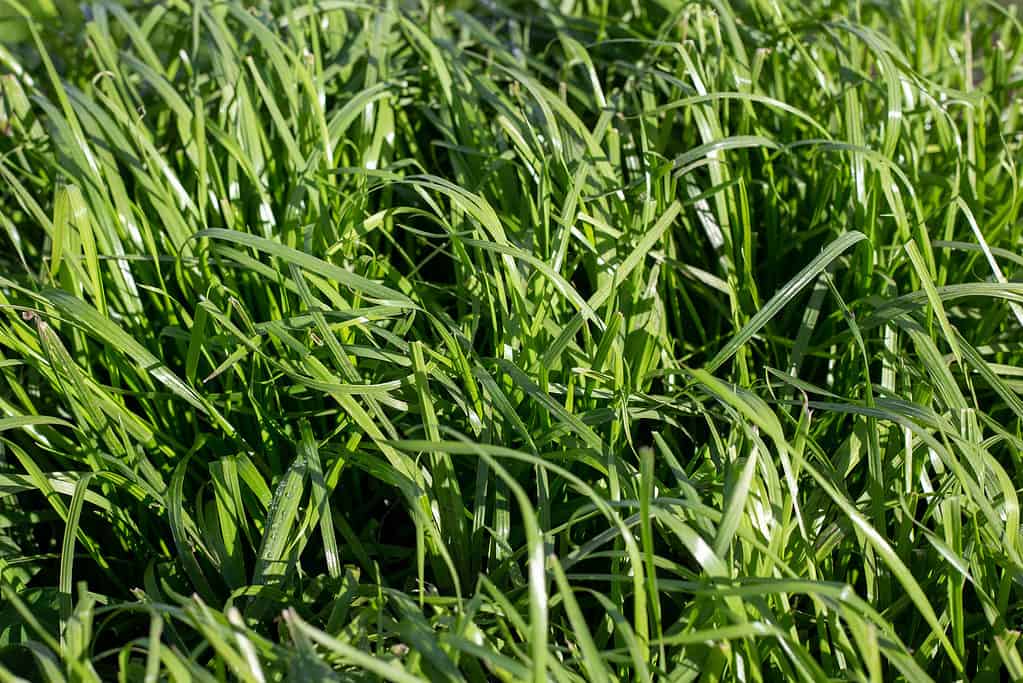
Cultivating green manure cover crops such as ryegrass helps you increase soil fertility and benefit greatly from crop rotation farming.
©Sheryl Watson/Shutterstock.com
9. Provides an Eco-Friendly Way to Eradicate Pests
Want to keep your garden bug-free without using harsh chemicals? Crop rotation combined with Integrated Pest Management (IPM) is an eco-friendly approach that keeps pests at bay. And the best part? It’s simple!
Crop rotation is an IPM technique that involves planting different crops in your garden each season. By rotating your crops, pests become disoriented and struggle to find their favorite foods year after year. In turn, this reduces pest infestations and harmful pesticides.
The Food and Agriculture Organization recognizes crop rotation as a critical IPM strategy to suppress and prevent harmful organisms. By utilizing this technique, you’re practicing a safer approach to pest control and nourishing your soil by reducing soil-borne insect pests and diseases while increasing soil fertility.
To start crop rotation, choose crops with different growth habits, root depths, and nutrient needs to avoid exhausting your soil. Switch them out each season, and you’ll have a thriving garden in no time.

By rotating your crops, pests such as the codling moth larva become disoriented and struggle to find their favorite foods year after year.
©iStock.com/Goldfinch4ever
Ready to Start Rotating Crops in Your Garden?
Rotating your crops can be an effective way to maximize your garden’s yield. You can easily set up a rotation program for yourself. This will ensure your plants get all the nutrients they need from the soil. They can also help you control pests and diseases.
Additionally, rotating crops can save money on expensive inputs like fertilizers and keep your garden healthy for years. In short, whether you’re just starting gardening or are a seasoned professional, rotating the crop is essential to any successful gardening strategy. It should not be overlooked.
Planning and adding this practice to your garden will establish higher yields and long-term soil health. Furthermore, rotating crops can bring variety to your garden, allowing you to extend the growing season and to experiment with new and exciting crops. All in all, this simple technique offers numerous benefits, so make sure to dust off your spade and do some crop rotation in your garden this season!
The photo featured at the top of this post is © zlikovec/Shutterstock.com
Thank you for reading! Have some feedback for us? Contact the AZ Animals editorial team.







